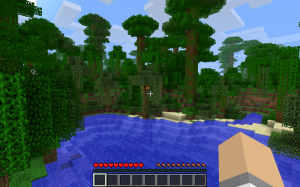I’m out of the hospital and back in the hood, firing on all cylinders. And by “hood” I mean my lovely, suburban home, and by “firing on all cylinders” I mean mashing keys in a drug-addeled haze (legally perscribed muscle relaxants and pain killers, I’m not that much of a hooligan). Been absent for the past 3-4 weeks, trapped in a hospital bed, but a strange combination of late night TV, prescription pain killers and George Michael have gotten me into the writing spirit. So first up on the plate, the latest symposium.
What caught my eyes and ears during the proceedings was a discussion about video games and wether it counted as hypertext. I would like to throw my two cents into this discussion. I agree with Mr. Heatwole (@TheHeatwole) to a certain extent. As a self-proclaimed geek and gamer, it is my belief that videogames can be hypertextual depending on the game itself. But it seems to me that there is a trend in videogames throughout their brief but rich existence in which games are becoming more and more like a hypertext. In the initial advent of the modern description of a video game, games were very linear. There was a final goal, be it clear all the asteroids or find the princess, and a linear path towards that goal, shoot them or reach the end without dying. Nowadays, games have evolved beyond this simple concept. They are designed for a variety of reasons and in a variety of different ways.
Just have a look at some of the games that adorn the virtual shelves of steam, or the hundreds of proposed and finished games that fill kickstarted.com. These games, from the indie developer to the mainstream gaming giants, are unique (even Call of Duty, which may be a little hard to believe) and give more control and ideas to the player. I would like to focus on two videogames in particular. Both have become huge titles with plenty of fans and sales. The first is the Mass Effect Series.
The Mass Effect series has garnered a reputation for it’s choice systems. Throughout the game, you are for asked hundreds of questions and given plenty of decisions to make. Your answers are based on the moral implications, some good answers, some evil answers, and some neutral answers. With each question, and each decision, the story changes. Characters live and die, missions change, the locations differ, all based on the actions you take and the path you create for yourself. No two playthroughs are the same.
The other game I wanted to talk about is an indie game that has become a worldwide monolith. Minecraft.
Minecraft has one simple concept, “Wake up on an island, punch trees”. With that, you’re on your own. Well, that’s not entirely true. There is a huge community of players, modders, information, help, video tutorials, let’s plays, mini-games, everything. But in the sense of the game, there is no tutorial, no pre-determined path, every world is different every time. And from that first world creation, how you play the game is entirely up to you. You can build your own dream house or fight creatures in the darkness. Collect ores and gems or farm wheat and melons. And there is no conclusion, just an open sandbox to do what you want.
Videogames are becoming more and more hyper textual as the industry evolves and changes. The rise of the indie game, and the vast technological improvements have meant that more choice and more control have been given to the player.
I would like to leave you with a link to an article by Matt Machmuller and Matthew Moffitt. The article, found here, is about the theories created by fans about their favourite videogames. In my opinion, this shows one of the great things about games. The communities behind them, the details involved, and the network of the fandoms who are filled with the creative combined imagination of the group.
Evan, signing out


